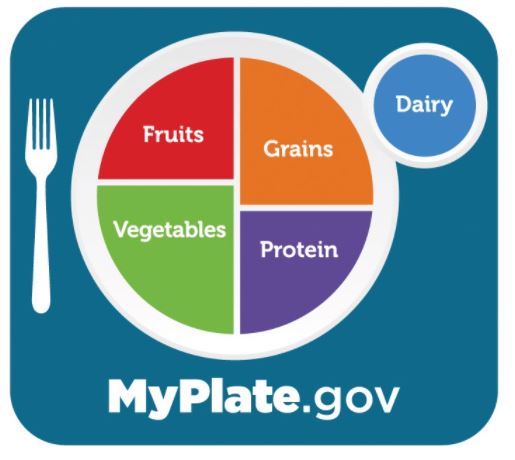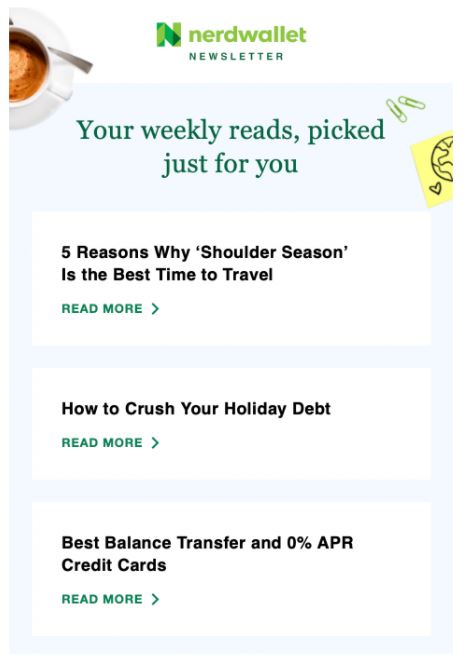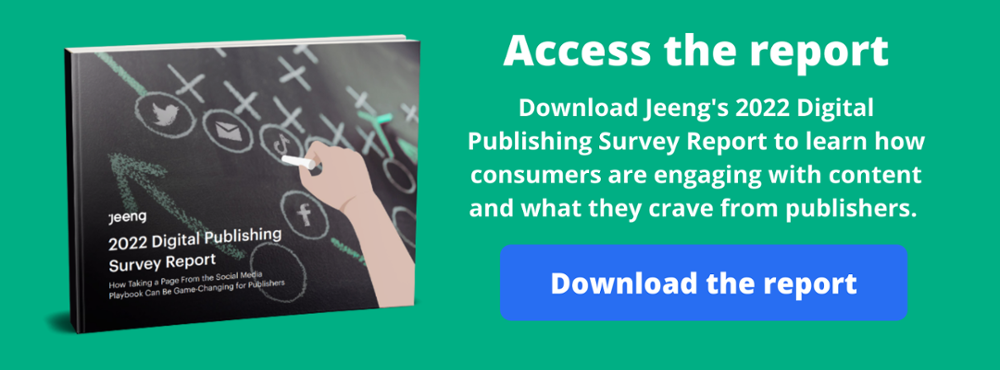If we think of a great personalization strategy as a well-balanced plate of food, data is the protein.
It’s the lean, nutrient-rich material that helps you build substantial campaigns, which can nourish and strengthen your business with increased revenue.

In fact, if we look at the whole plate of food groups as recommended by the U.S. Department of Agriculture (yup, they said goodbye to the famous food pyramid in 2011), it might be broken down like this:
- Protein: first-party data
- Grains: personalized content
- Fruits: audience targeting
- Vegetables: marketing technology
As for dairy? Well, that can be your retargeting operation, which feeds back into your personalization strategies and data pools once the whole plate is complete. Delicious!
Getting back on track, the important thing to remember here is to gather that valuable data to build a healthy, protein-fueled personalization strategy that keeps customers — and your bottom line — full.
As Jeeng and Mantis Research found in a 2022 study, U.S. adults have a strong appetite for personalization. Nearly 1 in 4 respondents say they read an email newsletter because the content feels like it was written just for them, and more than half say they want emails personalized based on their behavior, interests, location or birthday, up nearly 21% over last year.

So, how can publishers meet these demands? With data, of course.
More specifically, here are four ways you can use data to fuel personalization efforts and sustain your business with truly wholesome marketing strategies.
1. Gather first-party data directly from your audience
You can’t activate data without collecting that data first. And now that third-party cookies are on the way out, the most effective way to collect that data is through first-party channels — the ones you own and operate.
That means building email subscriber lists, tracking customer behavior on your website and app, and launching surveys to generate direct feedback. Publishers can also launch preference centers to collect first-party data to gauge exactly what readers and subscribers want to see.
For many publishers, this approach is a departure from how they usually operate. That’s because third-party cookies have been the go-to source for tracking and targeting for decades. But this pivot to first-party data represents a major turning point: it gives businesses the opportunity to control their own data, stop relinquishing it to the walled gardens of social platforms, and build better customer experiences as a result.
2. Create unique segments of targeted reader
Once you have that first-party data, you can use it to group readers and subscribers into unique, targetable audience segments. For example, you might divvy up your data by:
- Demographics (age, location, gender, education level, occupation, income)
- Behaviors (active on the app, prone to making e-commerce purchases)
- Content preferences (politics, tech, fashion, athletics, cooking)
- Favorite channels (email, push notifications, blogs)
- Stage of the marketing funnel (new recruit, active reader, loyal subscriber, inactive subscriber)
The New York Times, for example, used its proprietary first-party data to launch 45 new audience segments for advertisers. On a higher level, those segments are split up into six categories: age, income, business, demographics, and interest.
And how do they stack up against the publisher’s more traditional third-party segments? As Sasha Heroy, senior director of ad products and platforms for The Times, told Digiday, they perform just as well as — if not better than — those cookie-based groupings.
3. Build personalized content to meet people’s interests
At this point, publishers can create customized content and experiences for each audience segment. Inactive subscribers, for example, might receive an email with a special offer inviting them to engage with new content or take advantage of an exclusive deal. Or people who are prone to making e-commerce purchases might receive a personalized push notification inviting them to sign up for a new subscription or membership package.
As our study found, 2\3 of U.S. consumers are more likely to subscribe to an email newsletter if they know it will be personalized to their interests — up from 66% in 2021. In fact, people say one of their top reasons to pay for a subscription to an online website or email offering in the first place is because they want personalized content.

Just look at finance publisher NerdWallet. The company creates personalized experiences for its subscribers by delivering weekly email newsletters of curated stories right to their inboxes.

4. Reach customers across the right channels
First-party data isn’t just important for building audience segments and creating customized content. It’s also a valuable resource for identifying the most engaging channels among your consumers.
Email, for instance, is one of the best vehicles for delivering personalized content, building trust, and nurturing relationships. As our study found, 3 out of 4 U.S. adults check their email several times a day, compared to just two-thirds last year. Respondents also said email was their preferred channel for receiving real-time alerts from publishers. Millennials, in particular, are more open to receiving these instantaneous messages than their older counterparts are.
Once publishers identify their most engaging channels — like email, push notifications, blogs, and newsreader apps — they can combine them to build multichannel personalization strategies. This involves delivering customized and consistent messaging across platforms, so readers can enjoy uniform experiences that fit seamlessly into their online activities.
Now, that may sound complicated, but Jeeng has the tools to help make it simple. As the marketing landscape continues to shift and shake, our platform is built to withstand the turbulence — helping you gather and activate first-party data with personalized campaigns across platforms.
All you need to do is contact us and let us know you’re ready to get started.
Download our 2022 consumer survey report to learn more.


